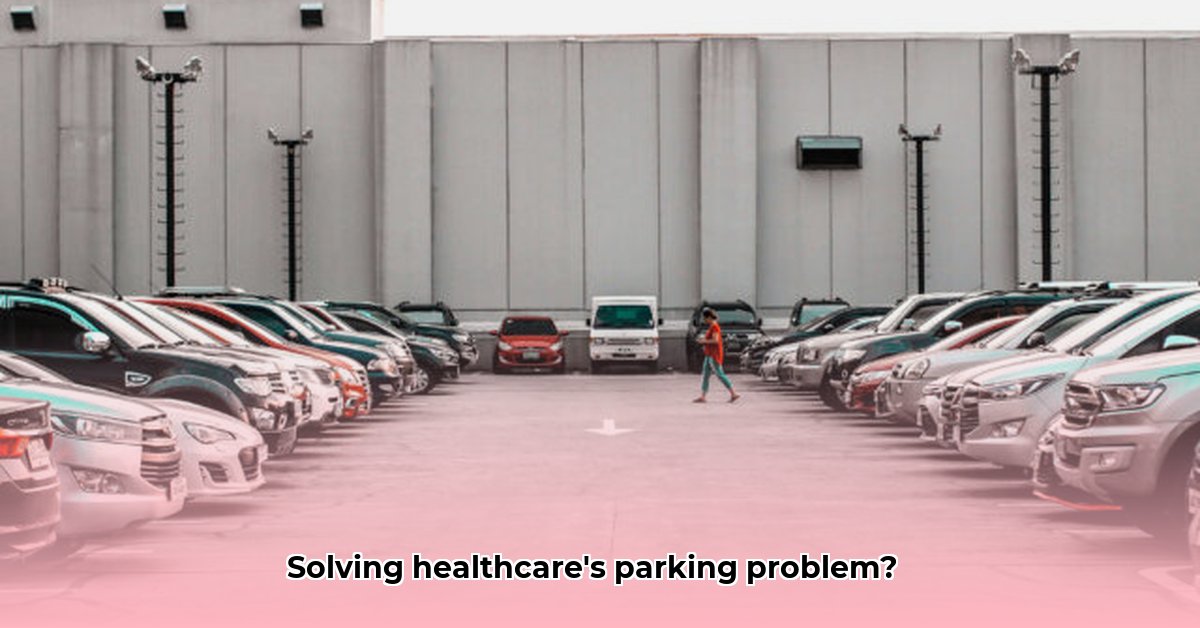
Addressing the Healthcare Parking Predicament
Finding a parking space at a hospital is often a stressful experience, adding to the emotional burden of illness or injury. This stress impacts patients, staff, and hospital operations. The inadequate provision of parking impacts hospital revenue, staff productivity, and patient satisfaction. This article explores the challenges of healthcare parking and provides practical solutions, using a hypothetical case study of the Shatto Parking Garage to illustrate key concepts. We will examine how improved parking solutions can benefit all stakeholders.
The Challenges of Healthcare Parking
Inadequate parking at healthcare facilities presents numerous issues. Long wait times to find a parking space cause considerable stress and frustration for visitors, often arriving during sensitive moments. The lack of suitable parking facilities may also disproportionately affect patients with mobility issues. Furthermore, challenges in parking management may result in lost revenue and staff productivity due to wasted time.
- Limited Capacity: Insufficient parking spaces lead to long wait times and increased congestion. This can result in patient frustration and potentially impact the hospital's reputation.
- Poor Wayfinding: Confusing signage and a poorly designed parking layout can make finding a parking space extremely difficult.
- Accessibility Issues: A lack of adequate accessible parking spaces negatively impacts patients and visitors with disabilities.
- Safety Concerns: Poorly lit areas, lack of security, and limited pedestrian walkways create safety concerns for patients and visitors.
- Inefficient Payment Systems: Long queues at payment kiosks further add to patient stress and frustration.
"Inadequate parking can translate directly to lost revenue and a decline in patient satisfaction," says Dr. Sarah Chen, Director of Operations at City General Hospital. "A well-designed parking system contributes significantly to a positive patient experience."
Shatto Parking Garage: A Vision for Enhanced Healthcare Access (Hypothetical Example)
While detailed information about the Shatto Parking Garage is unavailable, we can outline a hypothetical model demonstrating best practices for healthcare parking solutions addressing the challenges mentioned previously. This hypothetical facility would focus on improving patient experience, enhancing operational efficiency, and ensuring safety and accessibility.
Key Features of an Optimized Healthcare Parking Facility:
- Ample Capacity: Sufficient parking space to accommodate peak demand, minimizing wait times. This includes strategic forecasting considering future hospital expansion plans.
- Intuitive Wayfinding: Clear, visible signage, and potentially the use of a mobile app providing real-time parking guidance, are crucial aspects of an optimized system.
- Designated Accessible Parking: Conveniently located, clearly marked, and sufficiently wide accessible parking spaces.
- Enhanced Security Measures: Well-lit areas, security cameras, and potentially security personnel to ensure a safe environment.
- Seamless Payment Options: Mobile payment systems for quick and hassle-free payment processing, eliminating long queues.
The integration of these features aims to foster a smoother and more efficient process, positively impacting overall patient satisfaction and hospital efficiency.
Actionable Steps for All Stakeholders
Implementing changes requires a collaborative effort from all stakeholders. Here’s how they can contribute:
For Hospital Administrators:
- Invest in Smart Parking Technology: Implement real-time occupancy sensors, mobile apps, and electronic payment systems to improve parking management.
- Optimize Parking Lot Design: Review and improve signage, traffic flow, and parking lot layout for enhanced usability.
- Prioritize Accessible Parking: Ensure ample, conveniently located accessible parking spaces compliant with ADA guidelines.
- Strengthen Security Measures: Implement security cameras, improved lighting, and, if necessary, security patrols.
For Patients and Visitors:
- Utilize Hospital Apps: Download and use hospital apps, if available, to locate available parking and access payment options.
- Plan Ahead: Plan arrival times to avoid peak congestion.
- Consider Alternative Transportation: Explore alternatives such as public transport, ride-sharing services, or valet parking.
For Hospital Staff:
- Utilize Designated Parking: Utilize staff parking for faster access to the facility.
- Explore Alternative Commuting: Consider carpooling, cycling, or public transport options to reduce parking demands.
For Municipalities:
- Support Local Hospitals: Collaborate to develop comprehensive parking plans and improve infrastructure around healthcare facilities.
- Invest in Public Transportation: Improve public transportation access to reduce reliance on personal vehicles.
Conclusion: Building a Better Future for Healthcare Parking
The challenges of healthcare parking are significant, but so are the opportunities for improvement. By implementing smart strategies and technologies, hospitals can enhance patient and staff experiences while improving efficiency and reducing costs. The hypothetical Shatto Parking Garage demonstrates how a comprehensive approach to parking management can transform the entire healthcare experience, one parking space at a time.